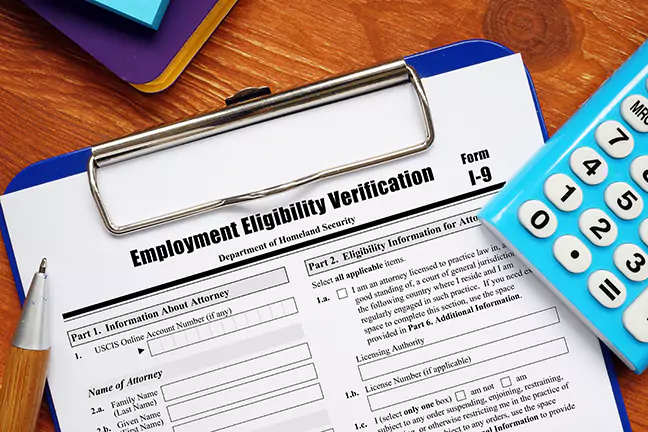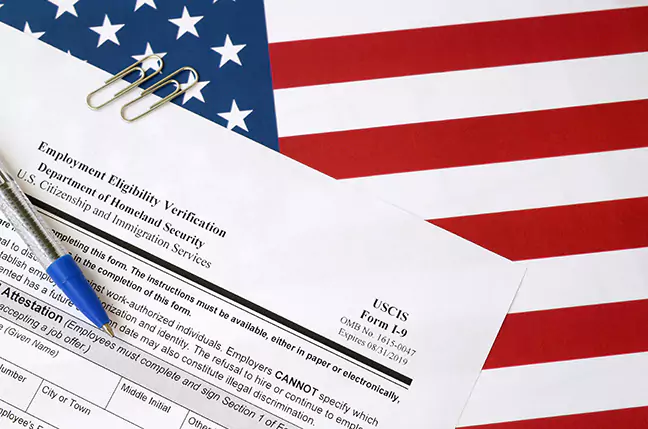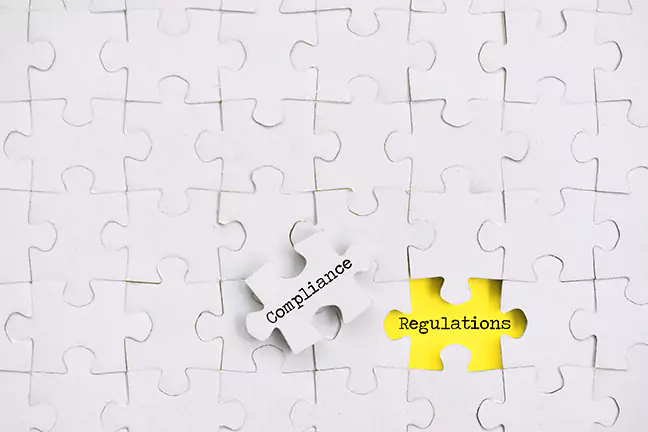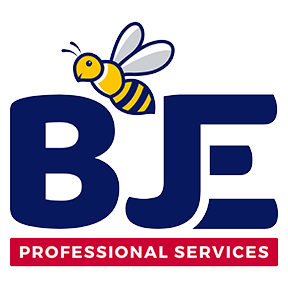Mastering the I 9 Compliance Audit: A Comprehensive Guide for Employers

In the complex landscape of workforce management, mastering the I-9 compliance audit stands as a crucial pillar for company success. Ensuring that your organization adheres to the requirements of Form I-9 is not just a legal obligation but a strategic imperative as it also verifies immigration status.
In this in-depth guide, we’ll delve into the intricacies of I-9 compliance, providing employers with valuable insights, best practices, and actionable steps to navigate this critical aspect of hiring and employment.
Understanding the Basics of Form I-9
Form I-9 is a U.S. Citizenship and Immigration Services (USCIS) document that verifies the employment authorization of individuals hired for employment in the United States. Familiarize yourself with the form’s components, including Sections 1, 2, and 3, and grasp the significance of timely completion.
Customs enforcement actions are at times taken during the I-9 audit, so be careful to avoid technical errors when completing the form (even for current employees). Companies should report violations of I-9 forms not completed properly.

Mastering Form I-9
The Form I-9, a crucial immigration form in the United States, serves as a cornerstone in the employment verification process. Employers must review and complete this document diligently to ensure compliance with immigration laws, which are for new and current employees. A good faith effort is imperative throughout the process, emphasizing the employer’s genuine commitment to adhering to the guidelines laid out by the U.S. Government.
Form I-9 is designed to verify each employee’s identity and work eligibility as a requirement of federal law, and criminal penalties will be enforced for those who receive a notice of inspection. Employers are required to complete this form for every new hire, including citizens and non-citizens.
A good faith effort, as per USCIS guidelines, means either immigration or employers are expected to make honest and diligent attempts to complete the form accurately, or by using a corrected form when mistakes are made. This includes providing clear instructions to employees, ensuring timely completion, and verifying the authenticity of presented documents.
In the age of technological advancements, many employers opt for electronic I-9 audit systems to streamline the process. These systems offer a more efficient way to complete, store, and manage Form I-9. By utilizing electronic systems, employers can enhance accuracy, reduce errors, and maintain centralized control over their employment eligibility verification records. However, it’s crucial to complete the I-9 on the first date employment begins, and by properly auditing each acceptable document.
Initiating proper audit documentation, and effectively initiating control over the Form I-9 audit process involves implementing structured procedures and policies which will help you avoid missing documentation. Employers should establish a clear protocol for the completion of Sections 1 and 2, ensuring consistency and accuracy across all employees.
Follow Proper Documentation Procedures
It is equally important to document the verification process thoroughly, including the examination of identity and work authorization documents. The completion of Section 2 requires the employer to attest to physically examining the documents provided by the employee and signing the form, emphasizing the employer’s role in ensuring compliance.
To maintain compliance, employers must not only initiate good faith efforts during the initial onboarding process but also regularly review and update Form I-9 audit records. Periodic audits help identify any discrepancies or omissions that may have occurred over time.
Employers should ensure that each form is properly dated, signed and that any necessary corrections are made promptly. Understanding the basics of Form I-9 is not just a legal requirement; it’s a proactive approach to building a compliant and legally sound workforce.
By mastering the basics of Form I-9, employers can contribute to a seamless onboarding process while fulfilling their legal obligations as an employer in the United States.

Who Needs to Complete Form I-9
All employees need to complete the I-9 audit no later than the first day of employment, the I-9 audit only verifies employment eligibility, but also helps ensure the proper immigration status. The tool helps clarify which employees are required to complete Form I-9.
Understanding the scope and exemptions ensures that your organization doesn’t overlook any crucial step in the compliance process. Also, be sure to stay up-to-date on changes to Form I-9 which changes every few years.
Importance of Timely Completion
Delve into the reasons why timely completion of Form I-9 audit is vital. Learn about the strict deadlines and the potential consequences for non-compliance, emphasizing the need for a streamlined onboarding process.
In the intricate landscape of workforce management, Form I-9 plays a pivotal role in ensuring that employers hire individuals authorized to work in the United States. One critical aspect often underestimated is the importance of timely completion. Let’s delve into why timely completion of the I-9 form is not just a procedural step but a strategic necessity for employers.
Know the Deadlines
One of the primary reasons for emphasizing timely completion of Form I-9 is to adhere to legal requirements. The U.S. Citizenship and Immigration Services (USCIS) mandates that employers complete Section 1 of the form on the employee’s first day of work and Section 2 within three business days of the start date.
Failure to meet the required deadlines can result in hefty fines and penalties for non-compliance. Employers must recognize that timely completion is not just a suggestion but a legal obligation.
Ensuring you have a streamlined onboarding process contributes to the efficiency of the onboarding process. Waiting until the last minute to collect and verify necessary documents can lead to delays in the employee’s start date, affecting productivity and potentially causing frustration for both the employee and the employer. By initiating the I-9 process promptly, hiring managers establish a streamlined onboarding experience that sets a positive tone for the new hire.
Remote I-9 Verification
In an era of remote work, the ability to conduct I-9 verification remotely has gained prominence. Examine the guidelines and best practices for remotely verifying the identity and work authorization of remote employees to ensure you aren’t collecting false documentation, and have a notice of inspection process in place.
While remote verification is acceptable, there are substantive violations in place for employers that have missing forms, and forms that are not completely properly. Supporting documentation is imperative to all employers and will be looked at by immigration and customs enforcement.
Proactive Risk Management
Proactive risk mitigation while completing Form I-9 on time is a measure to mitigate risks associated with unauthorized employment. Timely verification ensures that the workforce remains legally authorized, reducing the risk of legal consequences for employers. Moreover, it strengthens the employer’s defense in case of audits or inspections by immigration authorities, showcasing a commitment to compliance.
Demonstrating organizational integrity and timely completion of Form I-9 reflects organizational integrity and commitment to legal and ethical standards. It sends a message to employees that the company takes compliance seriously and is dedicated to following due processes. This commitment not only fosters a culture of responsibility but also contributes to building a positive employer brand, which can be instrumental in attracting top talent.
Timely Completion of the I-9
Be careful to take note of the expiration date and the document title of employment verification documents. Many companies fail the audit after receiving the notice of inspection, even on terminated employees because they accept documents with expiration dates that are in the past. Your audit process must be equal for all its employees, and not just for immigration reform. Processing frequent internal audits will ensure that your team is verifying the necessary documentation.
The importance of timely completion of Form I-9 extends beyond mere regulatory compliance. It is a strategic imperative that safeguards against legal repercussions, streamlines onboarding, mitigates risks, and demonstrates organizational integrity. Employers should recognize the significance of time management in the I-9 process as a cornerstone of responsible and compliant workforce management.

Section 1: Employee Information and Attestation
Guide your employees through the completion of Section 1, ensuring that they understand that the information required, including information from their permanent resident card as required by the Reform and Control Act, requires them to provide the correct personal details and attestation.
Best Practices for Document Verification in Section 2
Explore best practices for completing Section 2, focusing on the verification of identity and employment authorization documents. Understand the acceptable documents and learn how to avoid common pitfalls in this crucial step. Initial and date all fields as required, use the current date and any supplement b documents the form asks for.
Your job is not to be a law enforcement professional, but you are required to complete Section 2 accurately per the information you have been provided.
Reverification and Updates in Section 3
Learn about situations that require re-verification in Section 3 for former employees, such as when an employee’s work authorization document expires. Stay informed about updates to previously completed forms and the proper procedures for maintaining compliance.
It is important to understand that re-verification is just as important to the future compliance of your organization as verifying documents for new hires.
While most re-hires/new-hires use the list b document (driver’s license) accompanied by their social security card, you also need to ensure you provide the hire date, business title of the person inspecting the form, and all of the required documents.
A common mistake that tens of thousands of businesses make is when forms are not completed correctly or have incorrect information. If your Human Resources or compliance letter clearly outlines the process, including a secure location where the information you are using to verify employment you will find yourself not completing the information in the wrong columns, missing signature(s), or even having to complete a new form.
Preparation for a Potential I 9 Compliance Audit
Understand the recordkeeping requirements associated with Form I-9. Explore the timeframe for retaining completed forms, the accessibility of records for inspection, and strategies for efficient record management. Following the e-verify requirements through the USCIS’s electronic system shows you are making the proper effort in the event of an inspection.

Common Mistakes to Avoid When Completing the I-9
Let’s highlight common mistakes employers make in the I-9 compliance process and provide actionable tips on how to avoid them. From incomplete forms to improper document verification, empower employers with insights for error-free compliance.
Section 1 Mistakes
In the realm of employment compliance, Form I-9 holds paramount importance. However, many employers inadvertently stumble into common pitfalls that can lead to legal repercussions and fines. One frequent mistake is incomplete or inaccurate information in Section 1.
Employers must ensure that employees fill out this section accurately and promptly upon commencing employment. Providing clear instructions during the onboarding process can mitigate errors and prevent delays in completing this crucial step.
Section 2 Mistakes - Confirm the Immigration Status
Another prevalent misstep occurs in Section 2, where employers are tasked with verifying the authenticity of employees’ identity and employment authorization documents. One common error is accepting expired documents or failing to document the correct information.
Employers should familiarize themselves with the list of acceptable documents provided by the U.S. Citizenship and Immigration Services (USCIS) and stay vigilant to prevent unwittingly hiring individuals without proper work authorization.
Remote work has become increasingly common, bringing forth the challenge of remote I-9. Employers often make the mistake of assuming traditional in-person verification procedures can be replicated remotely.
It’s essential to understand the specific guidelines laid out by the USCIS for remote verification, including completing the Form I-9 within three business days of the employee’s start date.
Failing to adapt to the nuances of remote onboarding can expose employers to compliance risks and legal consequences as required by immigration reform and control policy. Also ensure you check the box on the I-9 indicating you are inspecting the documents remotely (via live video).
Employers must implement robust procedures for remote verification to ensure compliance in an evolving work landscape. By avoiding these common mistakes, employers can navigate the Form I-9 process seamlessly and maintain a compliant and law-abiding workforce.

Staying Informed Amidst Regulatory Change
The landscape of immigration and employment law is dynamic.
Seek guidance on how employers can stay informed about changes in regulations and ensure ongoing compliance with I-9 audit requirements. Homeland Security Investigations and other federal immigration officials review and require that all U.S. companies verify employment eligibility for all employees hired.
An immigration attorney is the best resource for those authorized to work in the United States or file as a lawful permanent resident. Be careful you are not discriminating against current employees or potential employees as most organizations will have several employees with different employment statuses, and verification documents that will be used.
Master the I-9 Audit Compliance
Mastering I-9 audit compliance is not just about meeting regulatory obligations; it’s about creating a robust foundation for a legally sound and ethically responsible workforce for a specific period. By understanding the nuances of Form I-9, implementing best practices, and staying vigilant in an ever-changing regulatory environment, employers can navigate the complexities of immigration compliance with confidence.
Stay informed, stay compliant, and build a workforce that reflects the integrity of your organization by using the expertise of BJE Pros for I-9 forms and regulations.
Hiring Managers: Ready to Transform Your Hiring?
Start recruiting with BJEPros today and experience a recruitment partner who truly understands the essence of retail talent acquisition. Let’s work together to create a future where your retail business thrives with the right team.
Social Share
Also Read:

7 Essential Steps on How to Develop a Recruitment Plan
A well-structured recruitment plan aligns your hiring process with your company’s goals. Let’s dive into the steps for how to develop a recruitment plan that will set you up for success.

8 Top Recruiting Strategies for Small Businesses
Recruiting the right candidates can be challenging, especially when a small business recruiting is competing with larger corporations. However, implementing effective recruiting strategies for small businesses can make all the difference.
Recent Posts

7 Essential Steps on How to Develop a Recruitment Plan

8 Top Recruiting Strategies for Small Businesses

